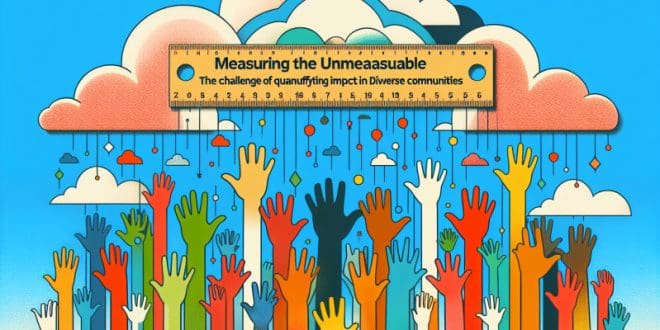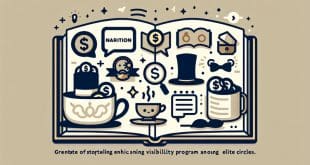In the world of grant-making and nonprofit work, the measurement of impact is both an art and a science. Foundations, donors, and nonprofit leaders seek concrete evidence of the difference their money and efforts are making in the communities they serve. However, when those communities are incredibly diverse and affected by complex societal factors, quantifying the true impact of a grant can be an evasive task.
When dealing with diverse populations, the effects of a grant may not be immediately visible or easily quantified. This poses a significant challenge for impact measurement. Impact, after all, can mean different things to different people. For one community, success might be measured in terms of educational outcomes or health indicators, while for another, the preservation of cultural heritage could be of paramount importance.
The one-size-fits-all approach commonly used in impact measurement often falls short when applied to heterogeneous populations. This is because standardized metrics can fail to capture the nuanced and unique ways in which a program may affect a community. Social impact in these settings might be transformative in ways that are deeply significant but not immediately quantifiable, such as empowerment, community solidarity, or cultural preservation.
To address these challenges, funders and nonprofits must cultivate innovative and inclusive metrics that do justice to the realities of the communities they aim to serve. This necessitates a willingness to blend quantitative methods with qualitative assessments. Numbers tell part of the story, but narratives, case studies, and testimonials fill in the gaps, providing a fuller picture of the change that is occurring.
Funders must ask themselves how they can adjust their impact metrics to take into account cultural and community differences. This might include developing culturally sensitive evaluation tools, working directly with community members to identify meaningful indicators of success, and recognizing the value of storytelling and community feedback as legitimate data sources.
One of the best practices for measuring impact inclusively involves establishing a dialogue with grantees about what success looks like for them. This can help create a framework of measurement that is flexible and adaptive, rather than rigid and imposing.
At Grants Club, we understand the importance of these considerations. We’re dedicated to fostering an environment where funders and grantees can work together to define and report impact effectively. We believe in developing a framework that respects and honors the unique aspects of each community we engage with.
Can such a framework be standardized across the board, or does it require tailoring to each individual grantee? How can we ensure that this process remains rigorous without being restrictive? These are questions we at Grants Club aim to explore and act upon, with the goal of advancing the practice of impact measurement in the field of grant-making.
The journey of measuring the unmeasurable is not straightforward, but it is imperative. By embracing diversity and striving for inclusivity in our impact metrics, we not only uphold the values of equity and respect, but also draw closer to a true understanding of the transformative power of grants in diverse communities.
 Grants Club Community
Grants Club Community







